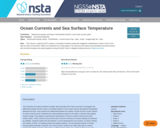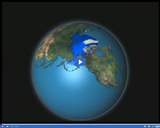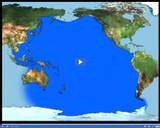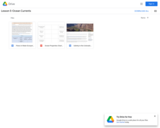
LitFlix July 2022
The resources in this collection can help support your study of the literature and films featured in season 1 of UEN LitFlix.
Month: July 2022
Theme: Summer Sailing
Films/Books:
- July 1 - Gulliver’s Travels (1939). Jonathan Swift’s satire is presented as a cel-animated musical.
- July 8 - Long John Silver (1953). Robert Newton plays Robert Louis Stevenson’s famed pirate captain.
- July 15 - Turn of the Tide (1935). Love forces two fishing families to reconsider their feud in a story based on Leo Walmsley’s Three Fevers.
- July 22 - Legend of the Sea Wolf (1941). A gentleman challenges a brutal captain in this take on Jack London’s The Sea Wolf.
- July 29 - The Beachcomber (1938). A beach bum butts heads with a missionary in an adaptation of W. Somerset Maughham's comic "Vessel of Wrath."

This interactive tool allows students to gather data using My NASA Data microsets to investigate how differential heating of Earth results in circulation patterns in the oceans and the atmosphere that globally distribute the heat. They examine the relationship between the rotation of Earth and the circular motions of ocean currents and air. Students also make predictions based on the data to concerns about global climate change. They begin by examining the temperature of oceans surface currents and ocean surface winds. These currents, driven by the wind, mark the movement of surface heating as monitored by satellites. Students explore the link between 1) ocean temperatures and currents, 2) uneven heating and rotation of Earth, 3) resulting climate and weather patterns, and 4) projected impacts of climate change (global warming). Using the Live Access Server, students can select data sets for various elements for different regions of the globe, at different times of the year, and for multiple years. The information is provided in maps or graphs which can be saved for future reference. Some of the data sets accessed for this lesson include Sea Surface Temperature, Cloud Coverage, and Sea Level Height for this lesson. The lesson provides directions for accessing the data as well as questions to guide discussion and learning. The estimated time for completing the activity is 50 minutes. Inclusion of the Extension activities could broaden the scope of the lesson to several days in length. Links to informative maps and text such as the deep ocean conveyor belt, upwelling, and coastal fog as needed to answer questions in the extension activities are included.
- Subject:
- Science
- Material Type:
- Lecture
- Provider:
- National Science Teachers Association (NSTA)
- Provider Set:
- NGSS@NSTA
- Date Added:
- 12/10/2020

The arctic ocean is located near the north pole.
- Subject:
- Science
- Provider:
- Utah Education Network
- Author:
- Visual Learning Company
- Date Added:
- 02/28/2010

The Indian Ocean is one of the smaller oceans.
- Subject:
- Science
- Provider:
- Utah Education Network
- Author:
- Visual Learning Company
- Date Added:
- 02/28/2010

The Pacific ocean is the largest and deepest ocean on Earth.
- Subject:
- Science
- Provider:
- Utah Education Network
- Author:
- Visual Learning Company
- Date Added:
- 02/28/2010

Learn about the amazing animals below the ocean's surface in this interactive quiz.
- Subject:
- Physics
- Science
- Material Type:
- Interactive
- Provider:
- Provider Set:
- Google for Education
- Author:
- Google Earth
- Date Added:
- 10/14/2021

My Life With the Wave, written by Octavio Paz / Catherine Cowan, illustrated by Mark Buehner. A little boy brings home a naughty wave. The result is a very colorful and intriguing story about water.
- Subject:
- Elementary English Language Arts
- English Language Arts
- Provider:
- Utah Education Network
- Provider Set:
- Reading Rainbow
- Author:
- GPN Educational Media
- Date Added:
- 12/30/2009
